LAYER THREE: MODERN ROME
LAYER THREE: MODERN ROME
The third layer focuses on the Fascist Regime’s manipulation of Rome through the demolition and construction of the city’s streets, buildings, exhibits, and spectacles – all of which were created as embodiments of Fascist ideology and demonstrations of the regime’s ability to complete projects previous leaders had only talked about. The sites pictured here speak to the values of sport, education, and nationalism that were openly embraced by the regime as an attempt to display the power and durability of Fascism. The sterile, minimalistic aesthetics of these new modern structures holds a striking contrast to the historic buildings that traditionally populated the city, creating an identifiable architectural language connected to the regime. The development of this modern Fascist-era architectural style was used as a form of manipulation – one that masked its isolationist and revisionist ideology and advertised itself to the world with the modern aesthetics of innovation and progress. However, many of these elements were simply appropriations of the forms and materials seen throughout Rome’s history; they were attempts by Mussolini to equate himself to the great rulers of the past and their monumental structures. The conspicuous Fascist iconography that remains on many of these buildings is evidence that he succeeded in creating a deep-rooted architectural legacy for himself. This demonstrates the extent to which urban fabric is shaped by policy, and leads us to consider how history is strategically presented to us, both in and outside the historical context of Rome.
Site 1- From Fascist Youth to WeGIL
Our first site and introduction to the modern layer of Rome was ex-GIL, or Casa della Gioventù Italiana del Littorio in Trastevere, now known as the WeGIL. Designed by favored Fascist architect Luigi Moretti in the 1930s for the ONB (Opera Nazionale Balilla), this rationalist piece of architecture made a clear connection to both ancient and medieval Rome through its travertine materiality and towerlike entry form, yet uses the modern architectural language as a tool to display the programs of the building’s interior. The ex-GIL served as a center for indoctrinating youth under Fascist leadership, functioning as a sports center, theater, healthcare center, and learning space; the transparency of the windows allowed these to be displayed to the public. We were surprised to find striking Fascist iconography still residing at the entrance of the building, especially considering the building currently serves as a multipurpose event and activity center.

Ex-GIL/Casa della Gioventù Italiana del Littorio (today's WeGIL). Photographed by Erin Hobbs.

Ex-GIL (today's WeGIL) Fascist iconography with inscription stating "It is necessary to win, but more necessary to fight." Photographed by Devin Chaldecott.
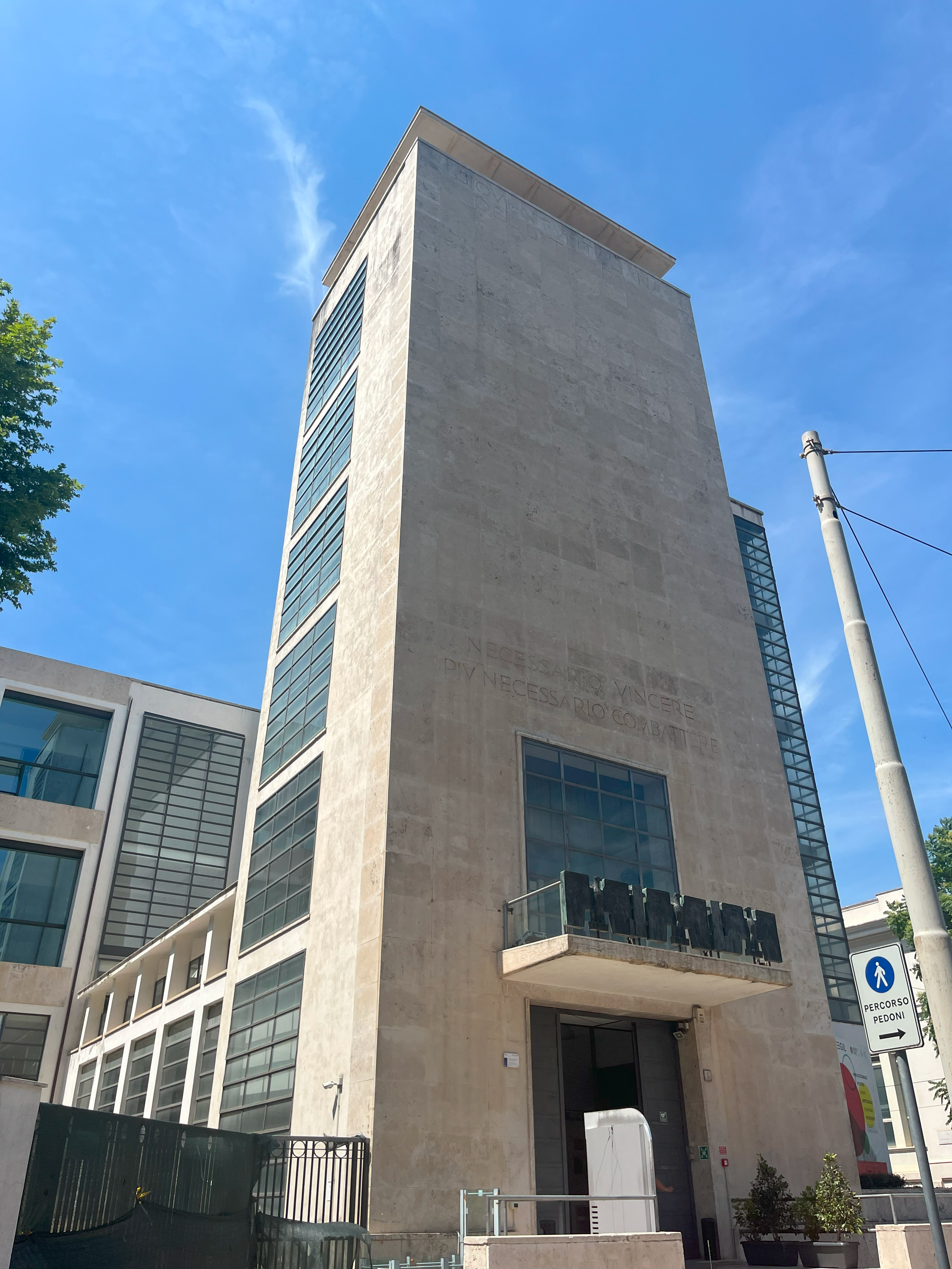
Ex-GIL (today's WeGIL) entrance. Photographed by Luke Lynch.
Site 2- Public Housing in Fascist Rome
Our second site under the third layer focused on public housing in Fascist Rome, specifically looking at the cases of Garbatella and Val Melaina, two developments that resulted from Mussolini’s displacement of neighborhoods from the city center. Garbatella was a project that was initiated right before the rise of Fascism but was rapidly expanded in response to the lack of housing in the city. As we experienced on our long commute to the sites, these suburbs were built far outside the city and intended to be for temporary use. This resulted in a lack of resources and proper sanitation, particularly at Val Melaina, making living conditions less than ideal for those unfortunate enough to be displaced here. However, the low-cost construction of these homes was not exempt from the Fascist pursuits of nationalism and aesthetic beauty; Garbatella was essentially the Roman interpretation of Ebenezer Howard’s “Garden City” – a juxtaposition of courtyard and garden spaces with traditional Roman materials and forms. Even the city core of Howard’s Garden City diagram is represented by the Piazza Bartolomeo Romano, lined on one edge by the Palladium, a cinema theater designed in 1926 by architect Innocenzo Sabbatini (who was also the creative behind the Albergo Rosso).
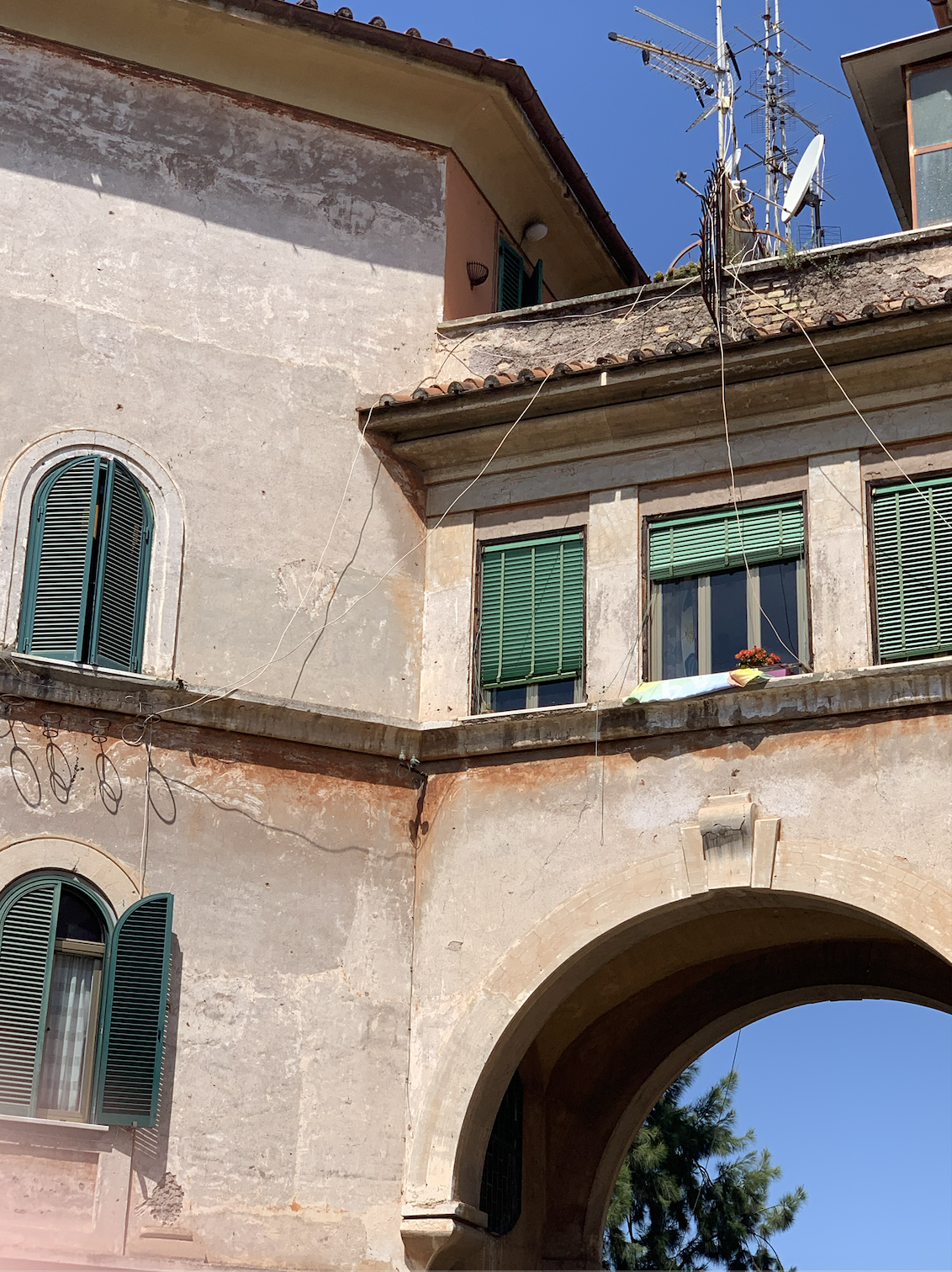
Garbatella housing. Photographed by Reid Graham.
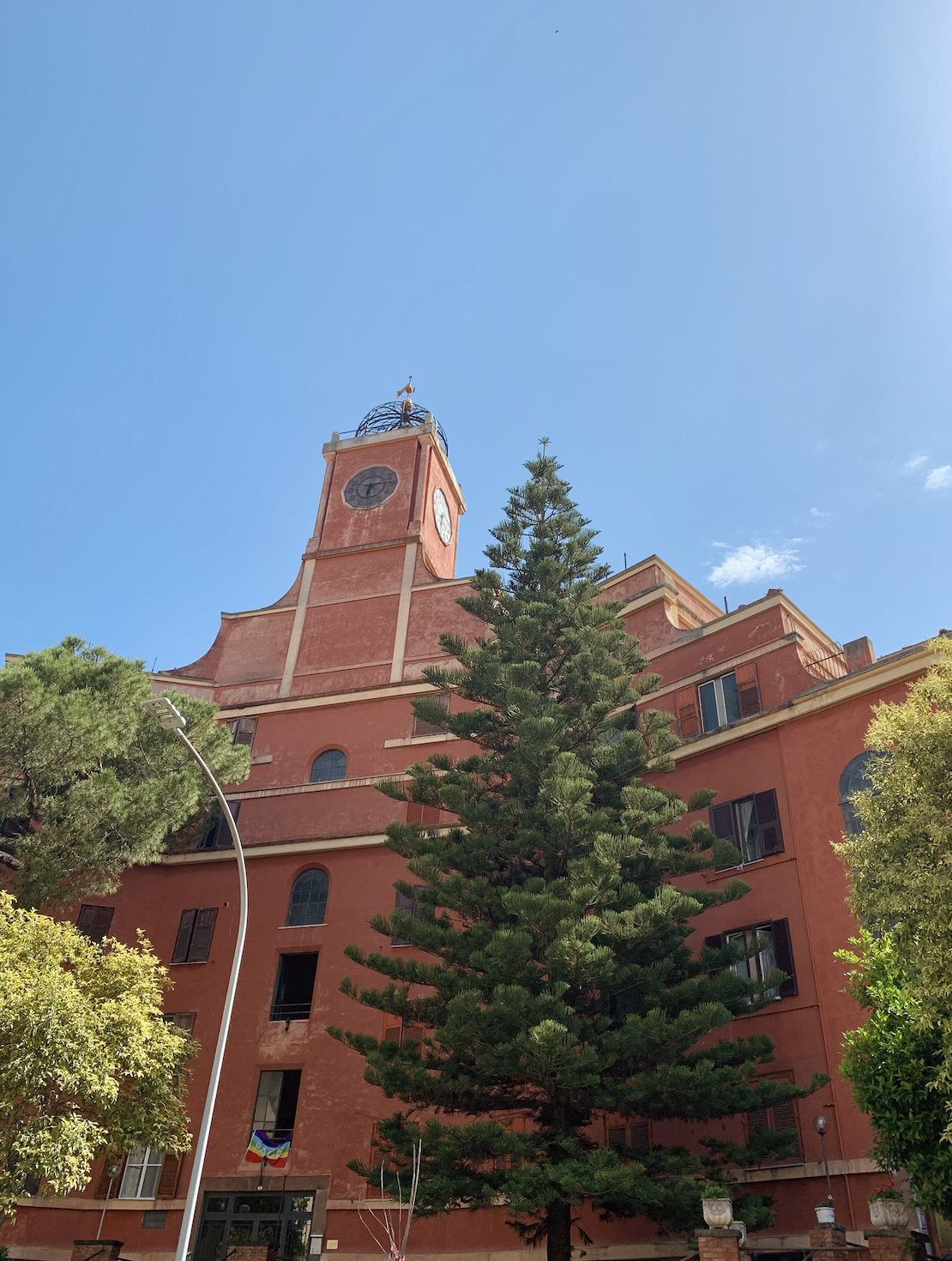
Lot 42, Albergo Rosso, Garbatella. Photographed by Reid Graham.

Garbatella street corner. Photographed by Peter Ankerberg.
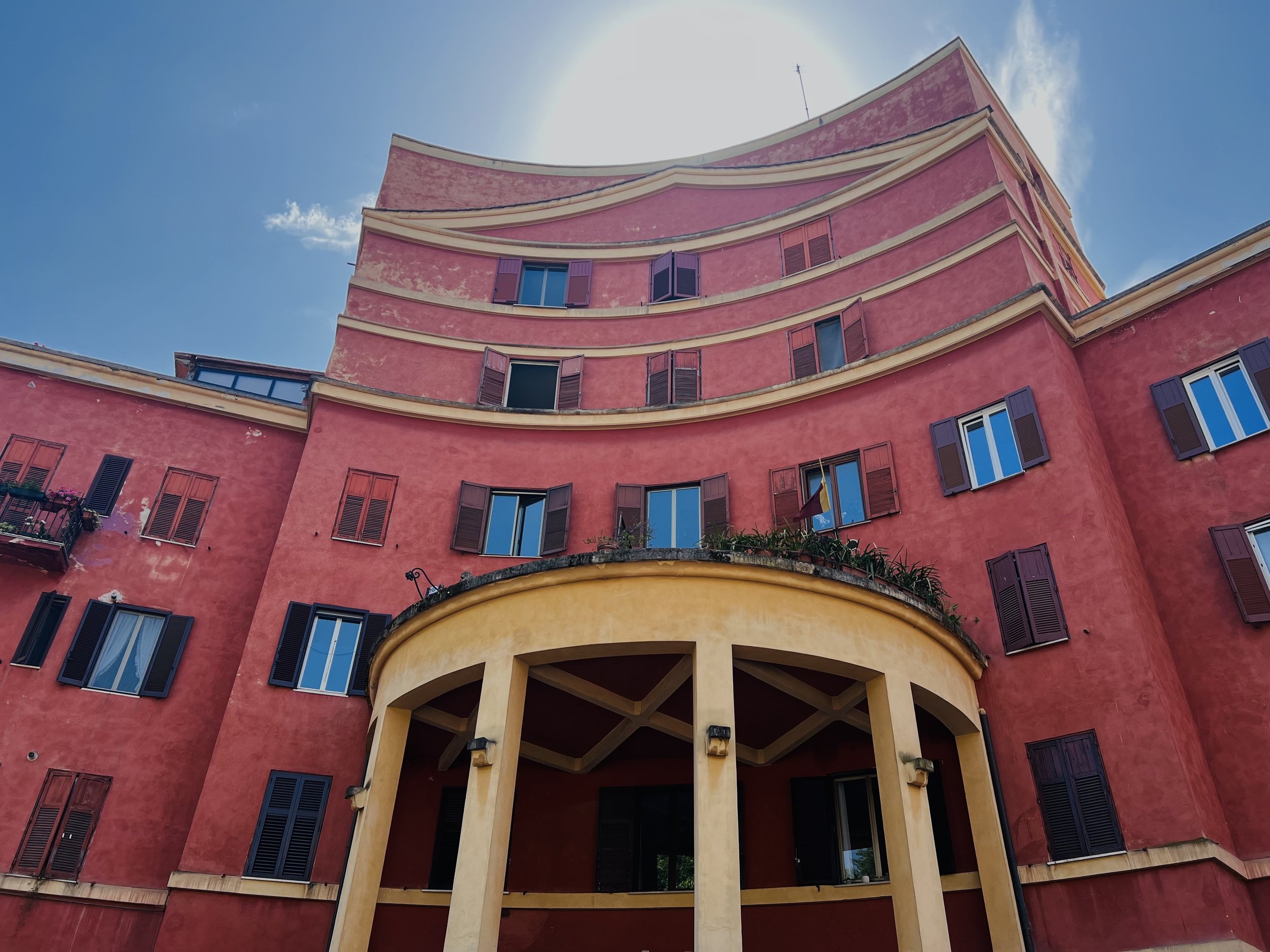
Lot 42, Albergo Rosso, Garbatella. Photographed by Devin Chaldecott.

Lot 12, Palladium cinema-theater, Garbatella. Photographed by Devin Chaldecott.
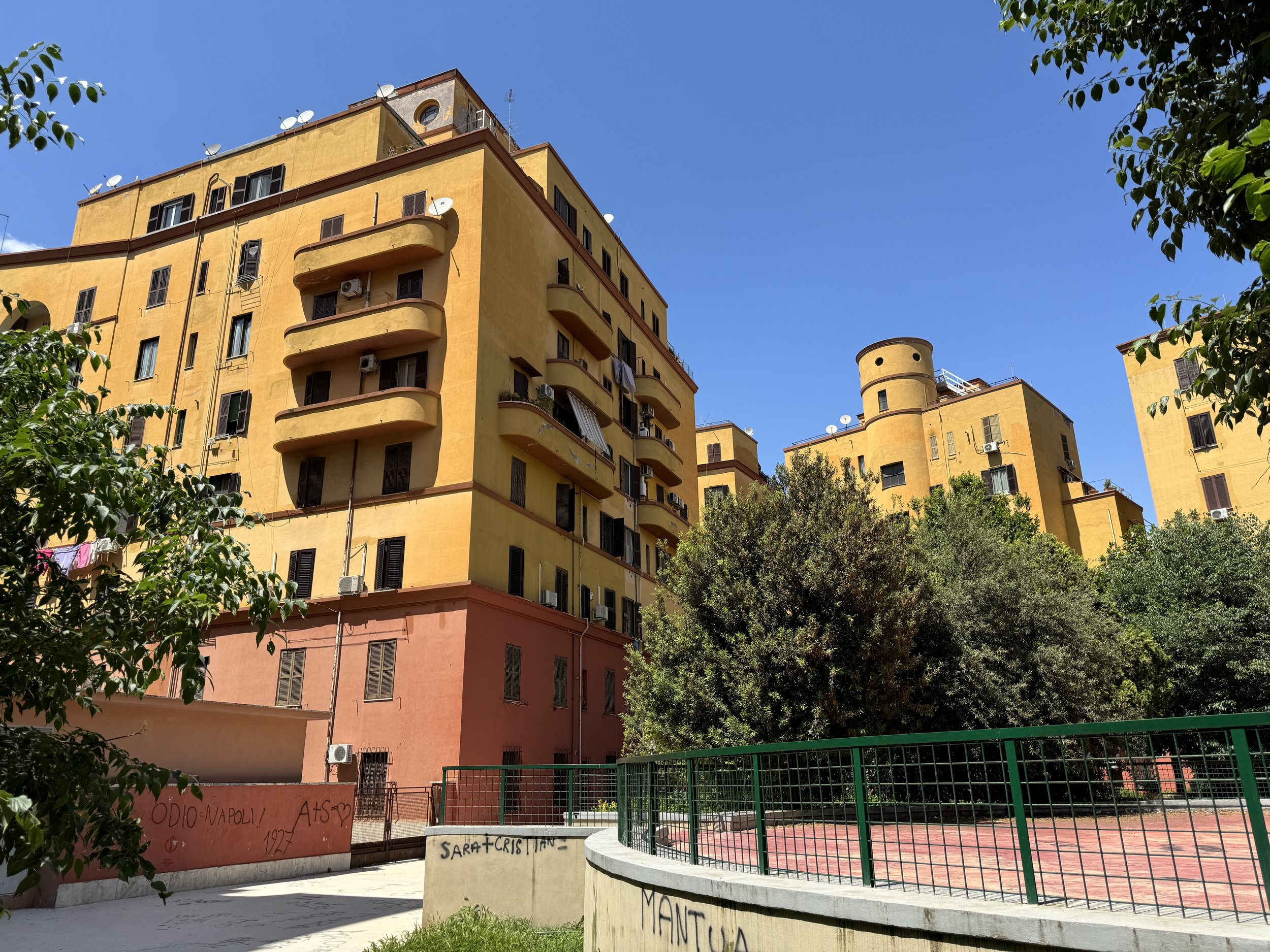
Val Melaina. Photographed by Peter Ankerberg.
Site 3- The EUR District
The E42 Quarter was essentially a model Fascist city created as a centerpiece for the 1942 Universal Exposition, or World’s Fair, in Rome. What started as an untouched site to the south of the city center along the way to the sea became the EUR District of Rome. The city showcased the work of the most famous Fascist-era architects, some of which included Adalberto Libera’s Palazzo dei Congressi, Arnaldo Foschini’s Church of St. Peter and St. Paul, as well as Mario De Renzi, Luigi Figini, and Gino Pollini’s Piazza delle Forze Armate. All of these men continued the regime’s appropriation of classical architectural elements in their designs, as well as the use of modernism as displays of innovation and self-sufficiency. Perhaps the most familiar example of this is the Palazzo della Civiltà Italiana, or Square Colosseum, by architects Ernesto Bruno La Padula, Giovanni Guerrini, and Mario Romano, which is an indisputable modern interpretation of both the Theater of Marcellus and the Colosseum. The regime’s obsession with manipulating perspectival views is showcased through the axial positioning of buildings about one another within E42 as well as about the city of Rome as a whole through the Via Imperiale.
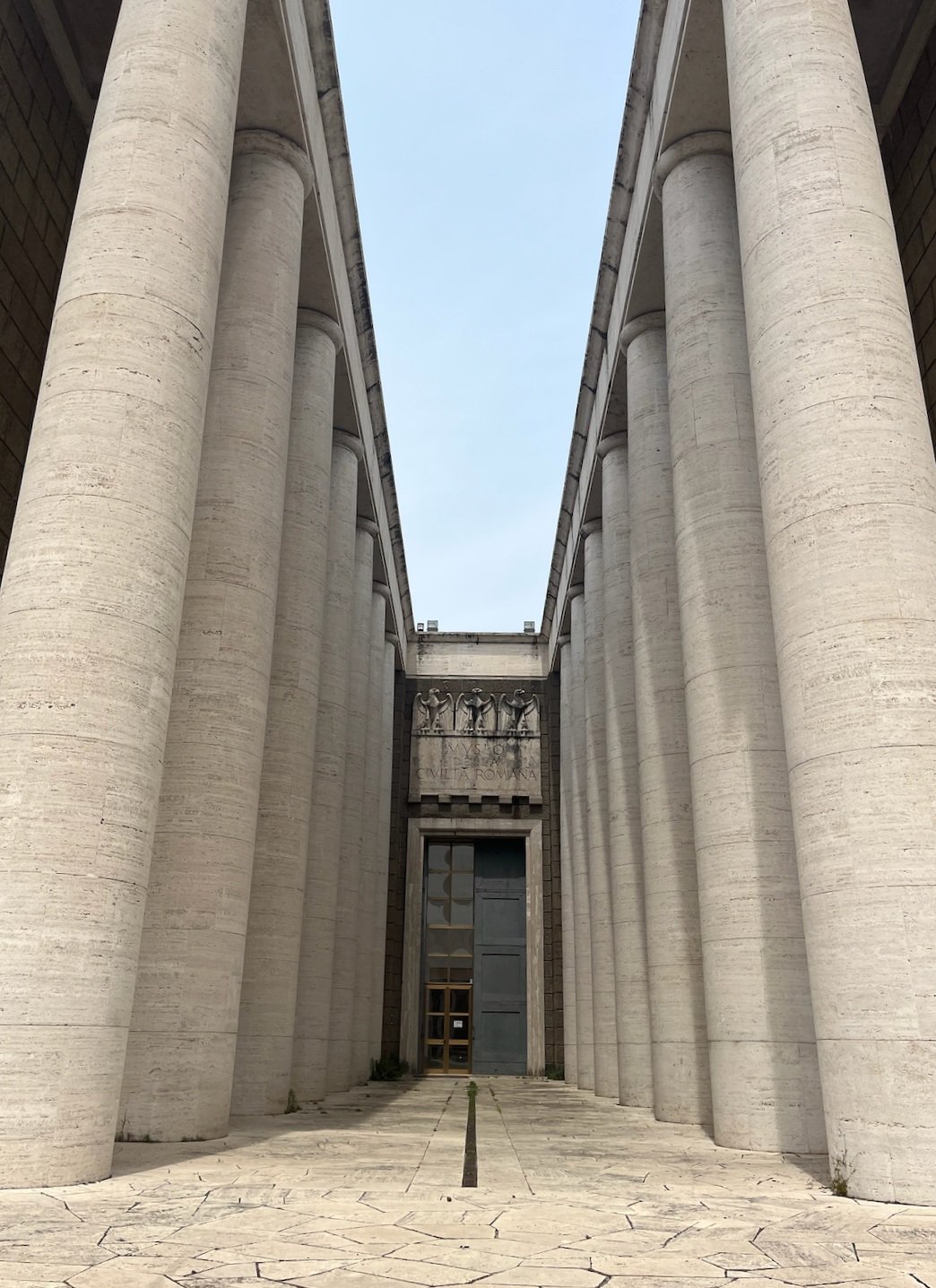
Fascist iconography at Museo della Civiltà Romana. Photographed by Luke Lynch.

Palazzo dei Congressi. Photographed by Makenna Karst.
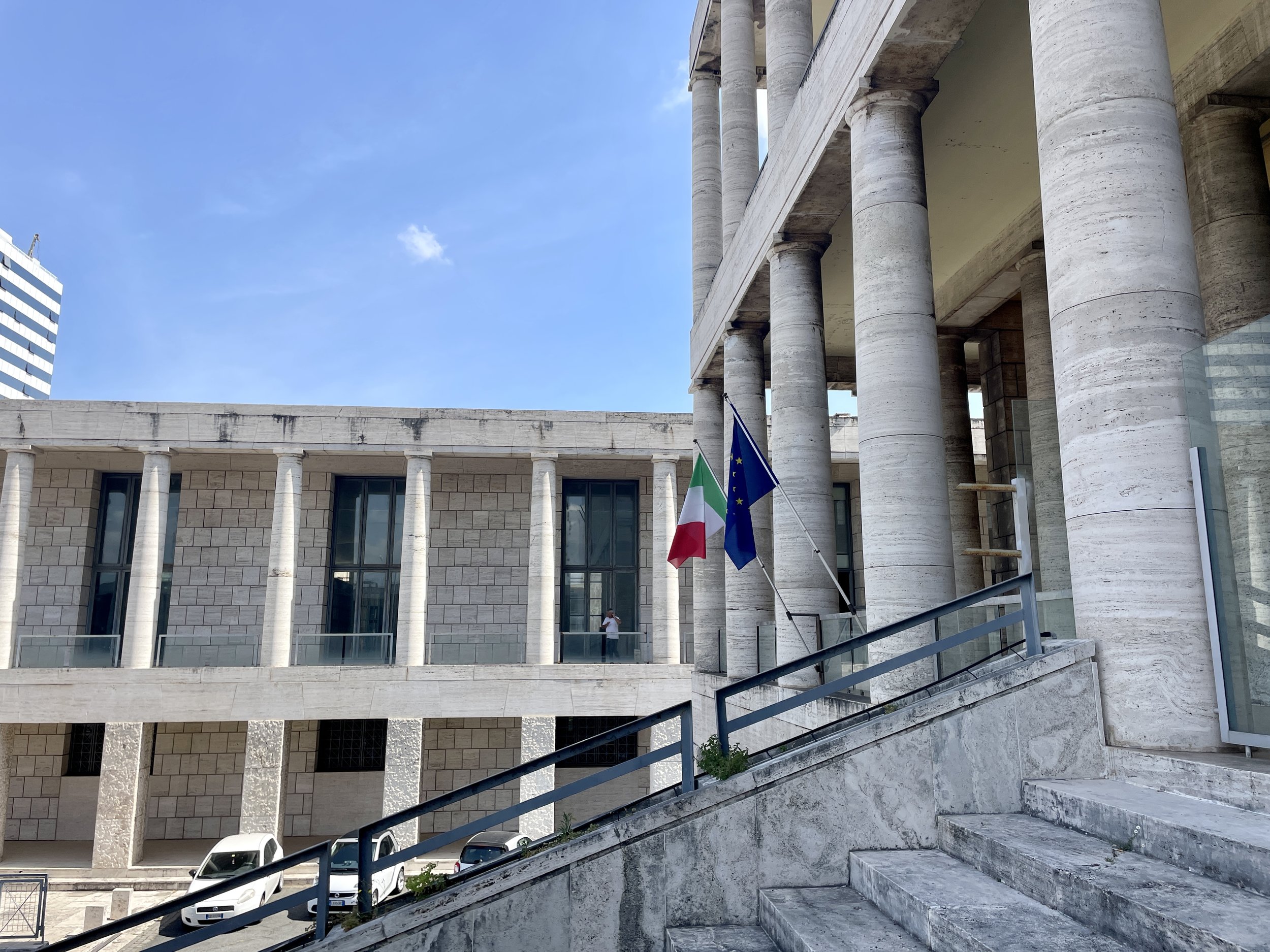
Piazza delle Forze Armate (today's Archivio Centrale dello Stato) in E42. Photographed by Erin Hobbs.

View of Square Colosseum from Palazzo dei Congressi. Photographed by Luke Lynch.

Palazzo della Civiltà Italiana/Square Colosseum. Photographed by Devin Chaldecott.

Palazzo della Civiltà Italiana/Square Colosseum. Photographed by Makenna Karst.

Nazi symbolism at EUR. Photographed by Reid Graham.

Church of St. Peter and St. Paul interior. Photographed by Peter Ankerberg.

EUR utility cover. Photographed by Peter Ankerberg.
Site 4- Resistance and Memory
We started our fourth day in Layer 3 at Via Rasella, a site of Italian retaliation against the Nazi invasion of Italy; it was at this site where a band of partisans bombed a company of German soldiers in 1944. Confused and distressed, the soldiers blindly shot their weapons around the street in defense, resulting in a painting of bullet holes across the buildings that enclose the street. In response to retaliation, 335 Italian men were arrested and executed in abandoned quarries, where the Monument to the Fosse Ardeatine – designed by Mario Florentino and team – now serves as a grave of remembrance. After we visited this memorial of resistance, we traveled to the Ostiense railway station that was built to commemorate Hitler’s visit to Rome in 1938; blatant symbols of Fascism still decorate this space. Nevertheless, the surrounding area, including the Parco Della Resistenza, has reclaimed this area as a place for the celebration of Italian resistance through the renaming of streets and the erection of monuments.

Ostiense railway station. Photographed by Peter Ankerberg.

Fascist iconography at the Ostiense railway station. Photographed by Devin Chaldecott.

Mosaic tile at the Ostiense railway station. Photographed by Reid Graham.

Via Rasella. Photographed by Luke Lynch.
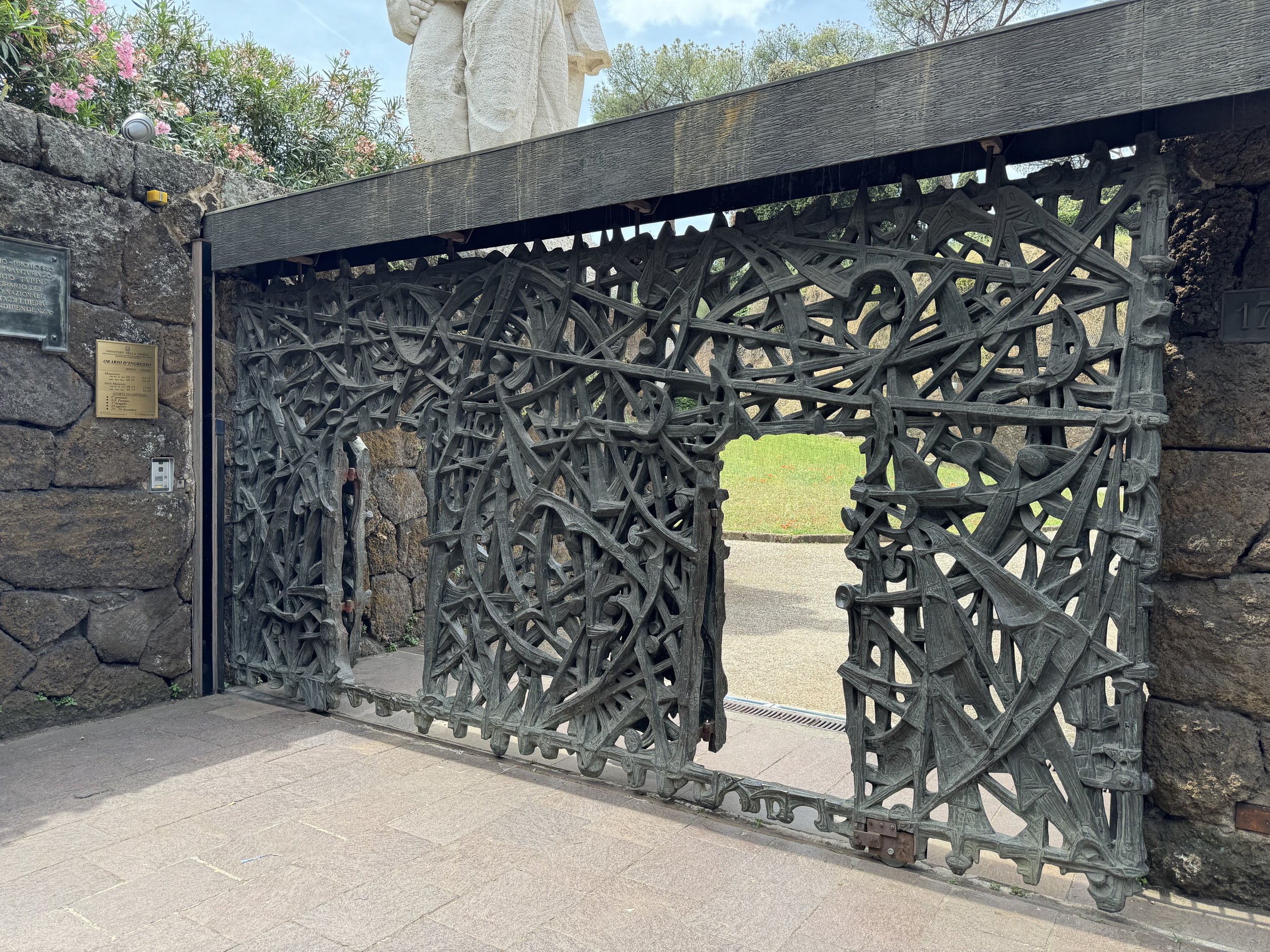
Mirko Basaldella's gate design at the Monument to the Fosse Ardeatine. Photographed by Peter Ankerberg.

Monument to the Fosse Ardeatine. Photographed by Devin Chaldecott.
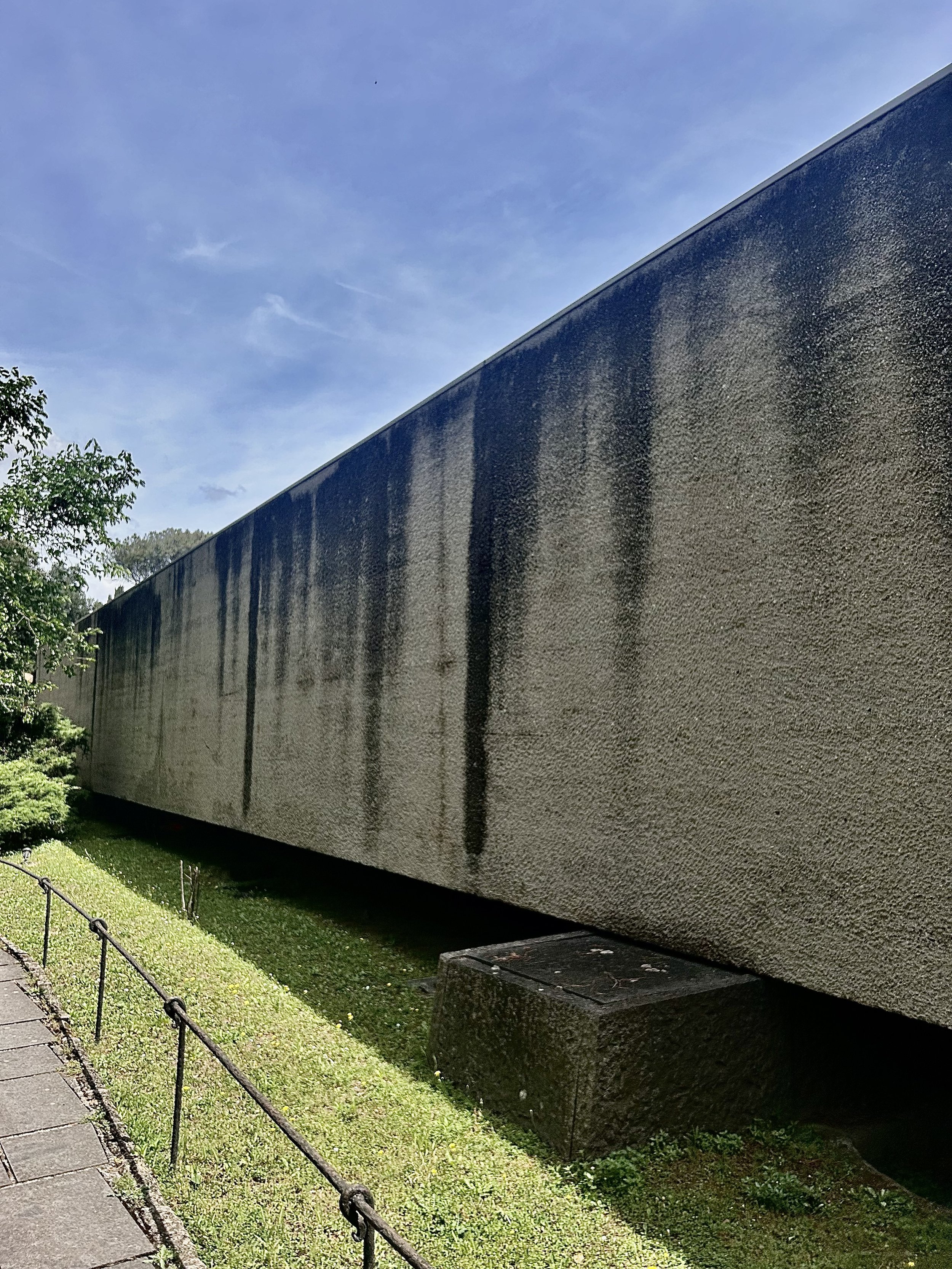
Monument to the Fosse Ardeatine. Photographed by Audrey Huhn.
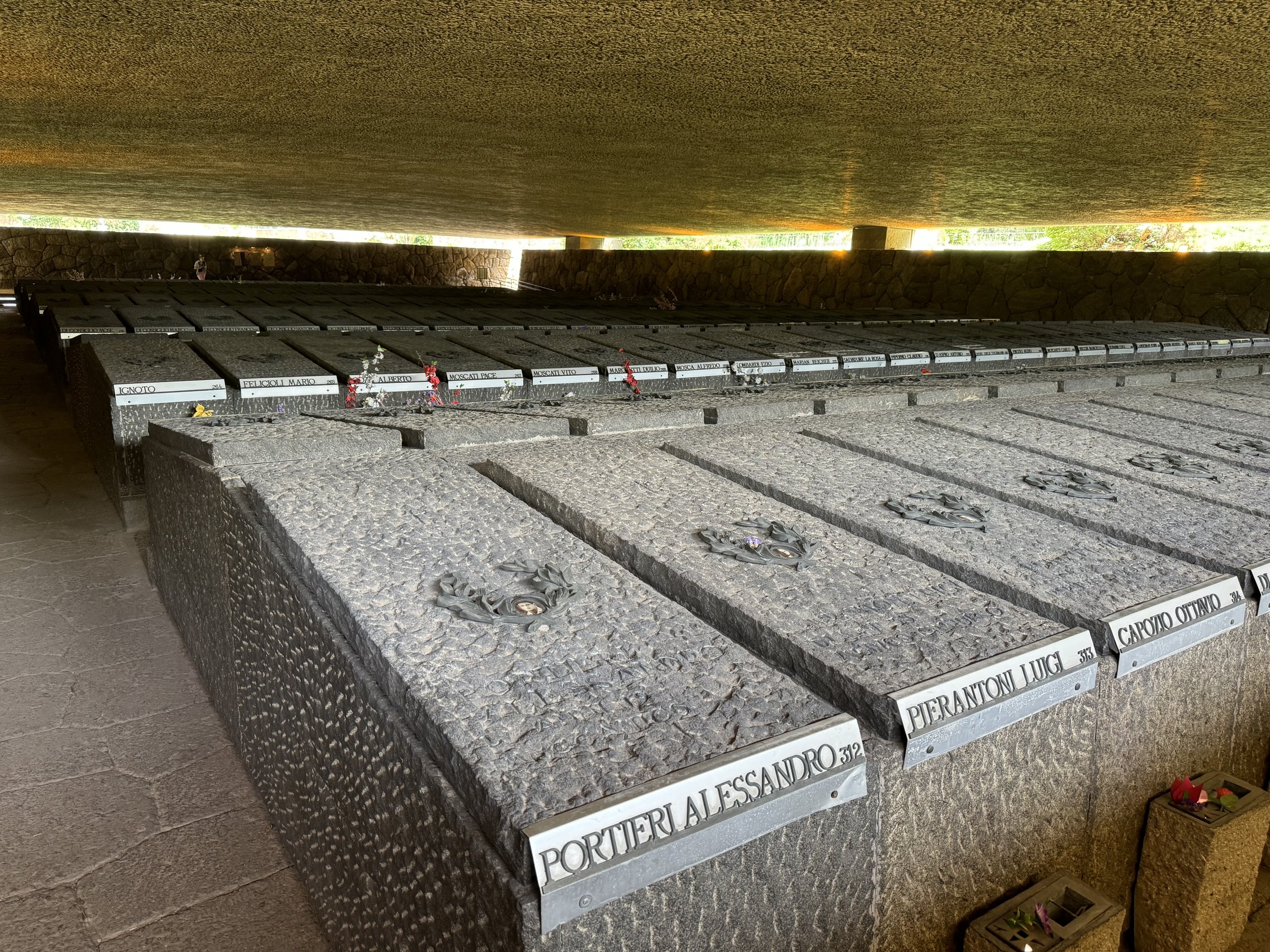
Tombs at the Monument to the Fosse Ardeatine. Photographed by Peter Ankerberg.

Parco Della Resistenza monument. Photographed by Makenna Karst.
Site 5- La Sapienza and Fascist Legacies
Our final site visit was to La Sapienza University of Rome, another complex dedicated to the youth of Rome, where we entered through Arnaldo Foschini’s Propylaea. Mussolini’s engineering of the Roman youth continued through the academic disciplines at the university, prioritizing the math and sciences that assisted in developing young minds for war. The organization of the campus continues the axial planning and modern simplicity that is characteristic of Fascism, as seen in the familiar architectural language of the buildings. Despite its Fascist beginnings, the university served as a site of student protest against Fascism – after the fall of the regime, students at the university protested against Fascist architecture professors whom they did not want to be taught by. This legacy continues today through the student camps and graffiti, such as what we witnessed in Giuseppe Pagano’s Physics building and Gio Ponti’s Mathematics building. Unlike many of the other sites we visited, most of the buildings here removed the obvious Fascist iconography from their exteriors, like what we saw on Gaetano Rapisardi’s Politics building, further emphasizing this rejection of the regime.

Propyalea. Photographed by Luke Lynch.
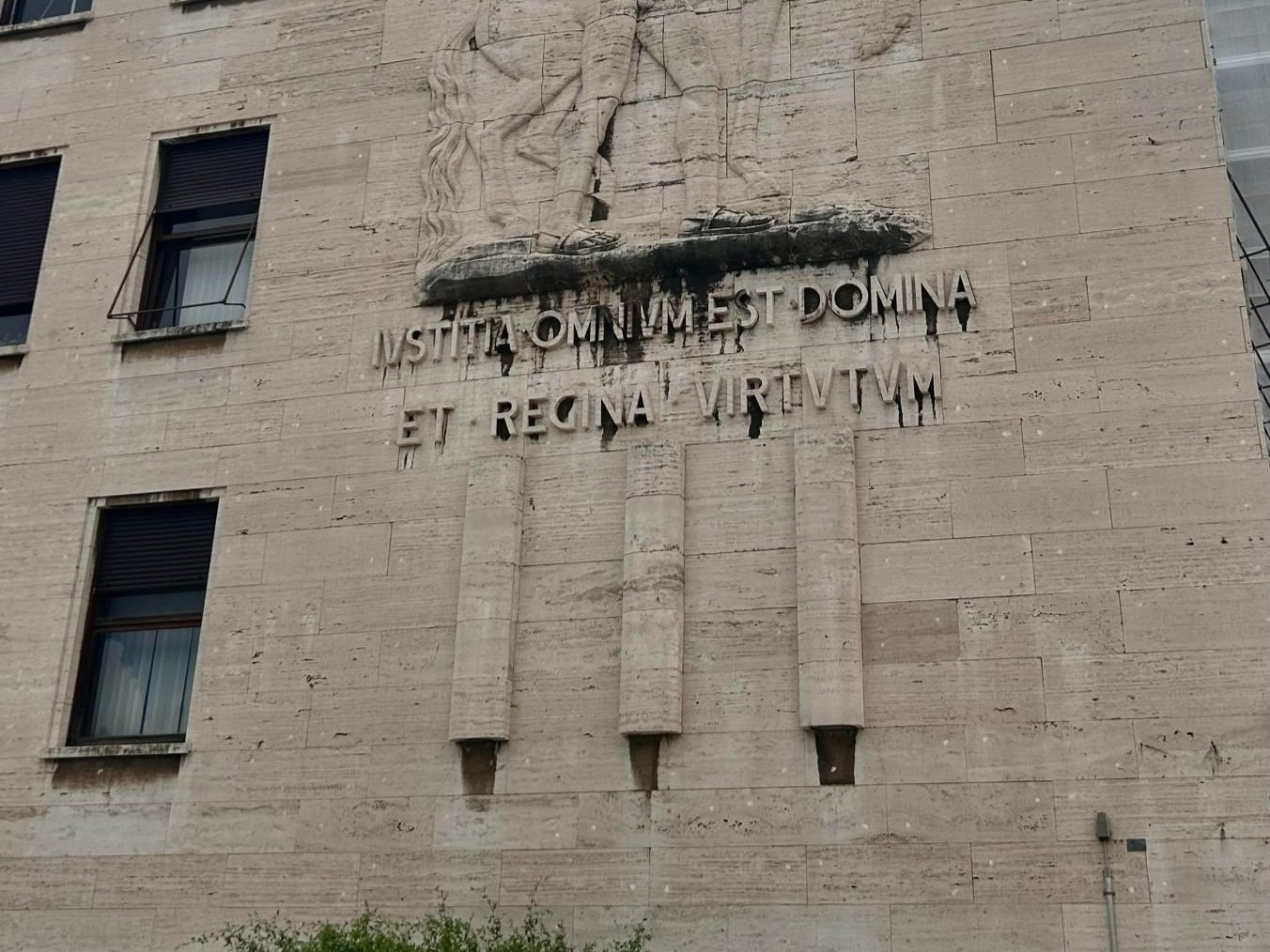
Removed iconography from Politics building. Photographed by Audrey Huhn.

Church of the Divine Wisdom at the university. Photographed by Reid Graham.

Grafitti on physics building. Photographed by Sanya Bery.

Graffiti on Mathematics building. Photographed by Makenna Karst.
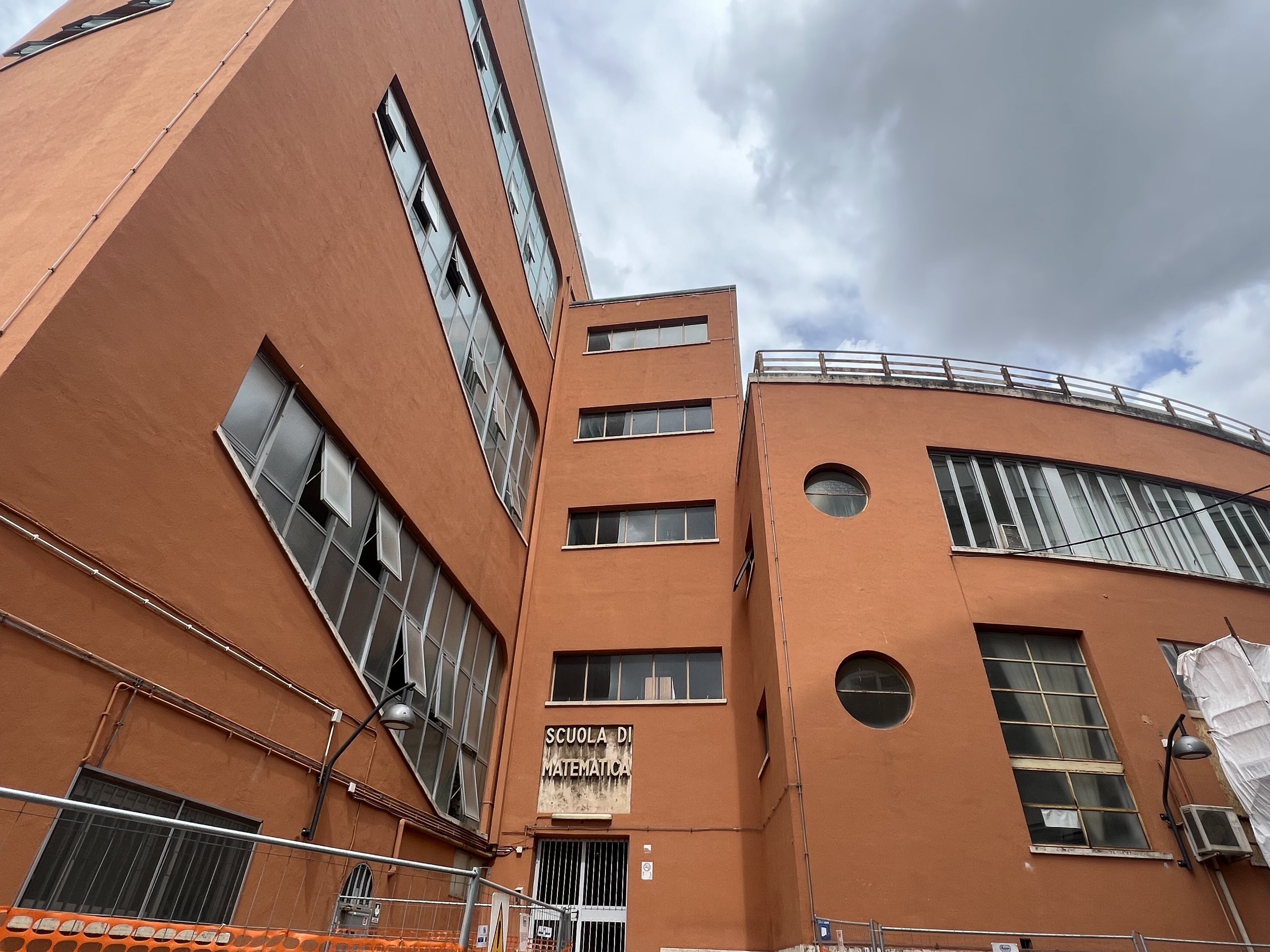
Mathematics building. Photographed by Devin Chaldecott.
